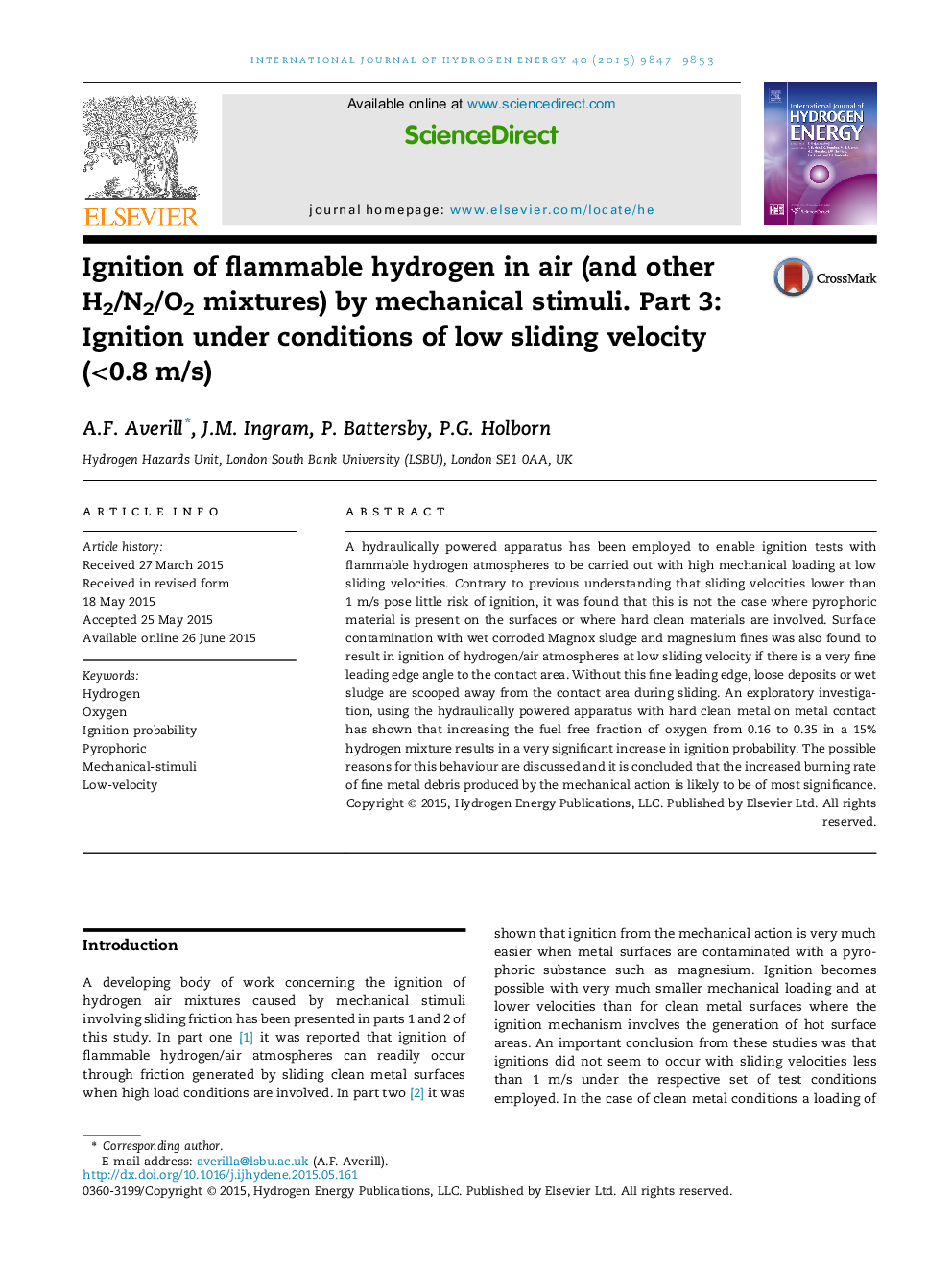| Article ID | Journal | Published Year | Pages | File Type |
|---|---|---|---|---|
| 1274877 | International Journal of Hydrogen Energy | 2015 | 7 Pages |
•We use a hydraulically powered apparatus for ignition tests of H2/N2/O2 mixtures.•Contrary to previous understanding, ignition can occur at sliding velocities <1 m/s.•Ignition can occur when the shape of contacting surfaces traps waste sludge deposits.•Increasing O2 in H2/N2/O2 mixtures with 15% H2 significantly increases ignition.•Increased ignition arises because of oxidation of contact surfaces and metal debris.
A hydraulically powered apparatus has been employed to enable ignition tests with flammable hydrogen atmospheres to be carried out with high mechanical loading at low sliding velocities. Contrary to previous understanding that sliding velocities lower than 1 m/s pose little risk of ignition, it was found that this is not the case where pyrophoric material is present on the surfaces or where hard clean materials are involved. Surface contamination with wet corroded Magnox sludge and magnesium fines was also found to result in ignition of hydrogen/air atmospheres at low sliding velocity if there is a very fine leading edge angle to the contact area. Without this fine leading edge, loose deposits or wet sludge are scooped away from the contact area during sliding. An exploratory investigation, using the hydraulically powered apparatus with hard clean metal on metal contact has shown that increasing the fuel free fraction of oxygen from 0.16 to 0.35 in a 15% hydrogen mixture results in a very significant increase in ignition probability. The possible reasons for this behaviour are discussed and it is concluded that the increased burning rate of fine metal debris produced by the mechanical action is likely to be of most significance.
